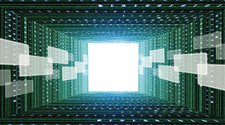VirtualBox 5.0 tested
Virtual Home

© Lead Image © Anan Kaewkhammul, 123RF.com
We look at a number of new features in VirtualBox 5.0, a popular desktop virtualization solution.
Virtualization programs allow users to launch or install a foreign system within a software environment. One of the most popular of these programs is VirtualBox, which is free for personal use. A major update of VirtualBox to version 5 was released in June.
Virtualization solutions have been put to a variety of uses. Deployed on servers, they cleanly isolate services and ensure uniform load balancing between hardware resources. On desktops, they provide a convenient solution for testing or using other systems. Linux users in particular frequently rely on them to work with the occasional, indispensable Windows application.
Since 2005, VirtualBox [1] has vied for the attention of the customers and competed with commercial offerings from VMware [2] and Parallels [3]. The project, which was acquired by Sun Microsystems in 2008 and, in turn, by Oracle in 2010, has now published a major release: version 5. I put VirtualBox through its paces to see what's new or different.
[...]
Buy this article as PDF
(incl. VAT)
Buy Linux Magazine
Subscribe to our Linux Newsletters
Find Linux and Open Source Jobs
Subscribe to our ADMIN Newsletters
Support Our Work
Linux Magazine content is made possible with support from readers like you. Please consider contributing when you’ve found an article to be beneficial.

News
-
Two New Distros Adopt Enlightenment
MX Moksha and AV Linux 25 join ranks with Bodhi Linux and embrace the Enlightenment desktop.
-
Solus Linux 4.8 Removes Python 2
Solus Linux 4.8 has been released with the latest Linux kernel, updated desktops, and a key removal.
-
Zorin OS 18 Hits over a Million Downloads
If you doubt Linux isn't gaining popularity, you only have to look at Zorin OS's download numbers.
-
TUXEDO Computers Scraps Snapdragon X1E-Based Laptop
Due to issues with a Snapdragon CPU, TUXEDO Computers has cancelled its plans to release a laptop based on this elite hardware.
-
Debian Unleashes Debian Libre Live
Debian Libre Live keeps your machine free of proprietary software.
-
Valve Announces Pending Release of Steam Machine
Shout it to the heavens: Steam Machine, powered by Linux, is set to arrive in 2026.
-
Happy Birthday, ADMIN Magazine!
ADMIN is celebrating its 15th anniversary with issue #90.
-
Another Linux Malware Discovered
Russian hackers use Hyper-V to hide malware within Linux virtual machines.
-
TUXEDO Computers Announces a New InfinityBook
TUXEDO Computers is at it again with a new InfinityBook that will meet your professional and gaming needs.
-
SUSE Dives into the Agentic AI Pool
SUSE becomes the first open source company to adopt agentic AI with SUSE Enterprise Linux 16.

